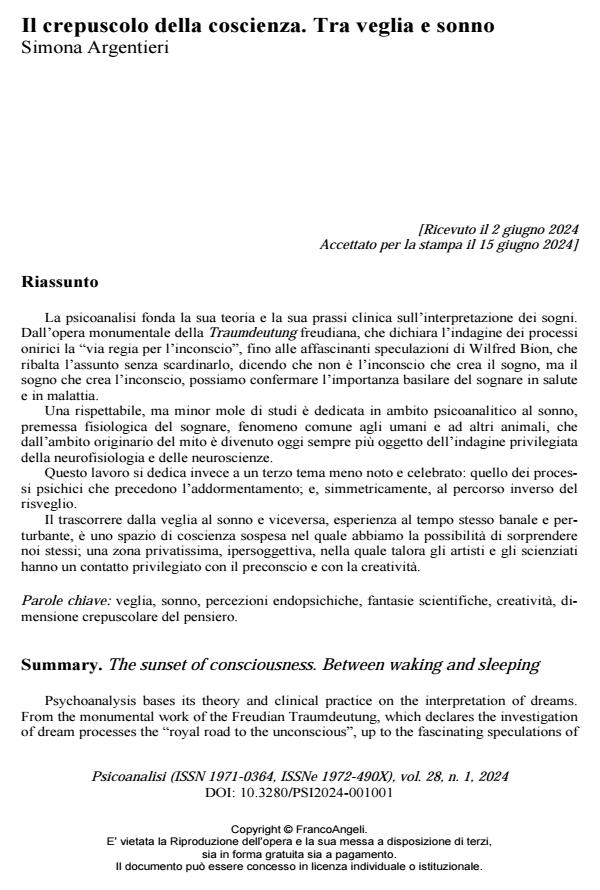The sunset of consciousness. Between waking and sleeping
Journal title PSICOANALISI
Author/s Simona Argentieri
Publishing Year 2024 Issue 2024/1
Language Italian Pages 10 P. 5-14 File size 165 KB
DOI 10.3280/PSI2024-001001
DOI is like a bar code for intellectual property: to have more infomation
click here
Below, you can see the article first page
If you want to buy this article in PDF format, you can do it, following the instructions to buy download credits

FrancoAngeli is member of Publishers International Linking Association, Inc (PILA), a not-for-profit association which run the CrossRef service enabling links to and from online scholarly content.
Psychoanalysis bases its theory and clinical practice on the interpretation of dreams. From the monumental work of the Freudian Traumdeutung, which declares the investiga-tion of dream processes the “royal road to the unconscious”, up to the fascinating specu-lations of Wilfred Bion, who overturns the assumption without undermining it, saying that it is not the unconscious that creates the dream, but the dream creates the uncon-scious, we can confirm the basic importance of dreaming in health and in illness. A respectable, but smaller amount of studies in the psychoanalytic field is dedicated to sleep, the physiological premise of dreaming, a phenomenon common to humans and other animals, which from the original context of myth has today increasingly become the object of the privileged investigation of neurophysiology and of neuroscience. This work instead dedicates itself to a third, less well-known and celebrated theme: that of the psychic processes that precede falling asleep; and, symmetrically, to the re-verse path of awakening. The passage from wakefulness to sleep and vice versa, an experience that is both ba-nal and disturbing, is a space of suspended consciousness in which we have the possibil-ity of surprising ourselves; a very private, hyper-subjective zone in which artists and sci-entists sometimes have privileged contact with the preconscious and with creativity.
Keywords: waking, sleep, endopsychic perceptions, scientific fantasies, creativity, twi-light dimension of thought.
Simona Argentieri, Il crepuscolo della coscienza. Tra veglia e sonno in "PSICOANALISI" 1/2024, pp 5-14, DOI: 10.3280/PSI2024-001001